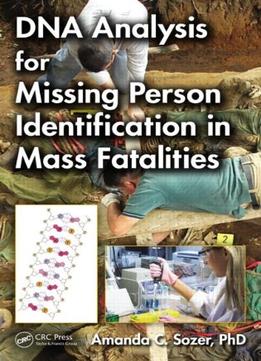
Dna Analysis For Missing Person Identification In Mass Fatalities
by Amanda C Sozer /
2014 / English / PDF
5 MB Download
Advances in DNA technology have expanded such that forensic DNA profiling is now considered a routine method for identifying victims of mass fatalities. Originating from an initiative funded by a grant from the U.S. Department of State, DNA Analysis for Missing Person Identification in Mass Fatalities presents a collection of training modules that supply comprehensive instruction in these complex techniques. The book begins with a concise overview of DNA analysis methods and their use in identifying victims of mass fatalities. It then goes on to explore: • Mass fatality response operations, including body recovery, mortuary operations, family assistance, the identification of human remains, and psychosocial support for families • Best practices in DNA sample collection and the different types of reference samples that can be used to identify a reported missing (RM) individual • Autosomal short tandem repeat (STR) DNA profile analysis and interpretation, and procedures to ensure data accuracy • Major steps involved in generating a DNA profile and the complex aspects of data analysis and interpretation • The importance of data management using information technology tools, and tips for maintaining quality operations • Accreditation and standards and the major elements of a DNA quality program • Setting up a laboratory operation, including planning, staffing, identifying types of equipment and supplies, and the procedures for ensuring that laboratory equipment performs appropriately The book includes a discussion of the key steps in the preparation, delivery, and evaluation of training sessions for personnel responding to a mass fatality human identification event. It also provides a comprehensive vocabulary list with terms related to mass fatality DNA identification. This text is a must-read for organizations contemplating the use of DNA in human identification initiatives following mass fatalities. It is also a tremendous value to emergency manager/planners, medical legal authorities, and forensic DNA laboratories.











